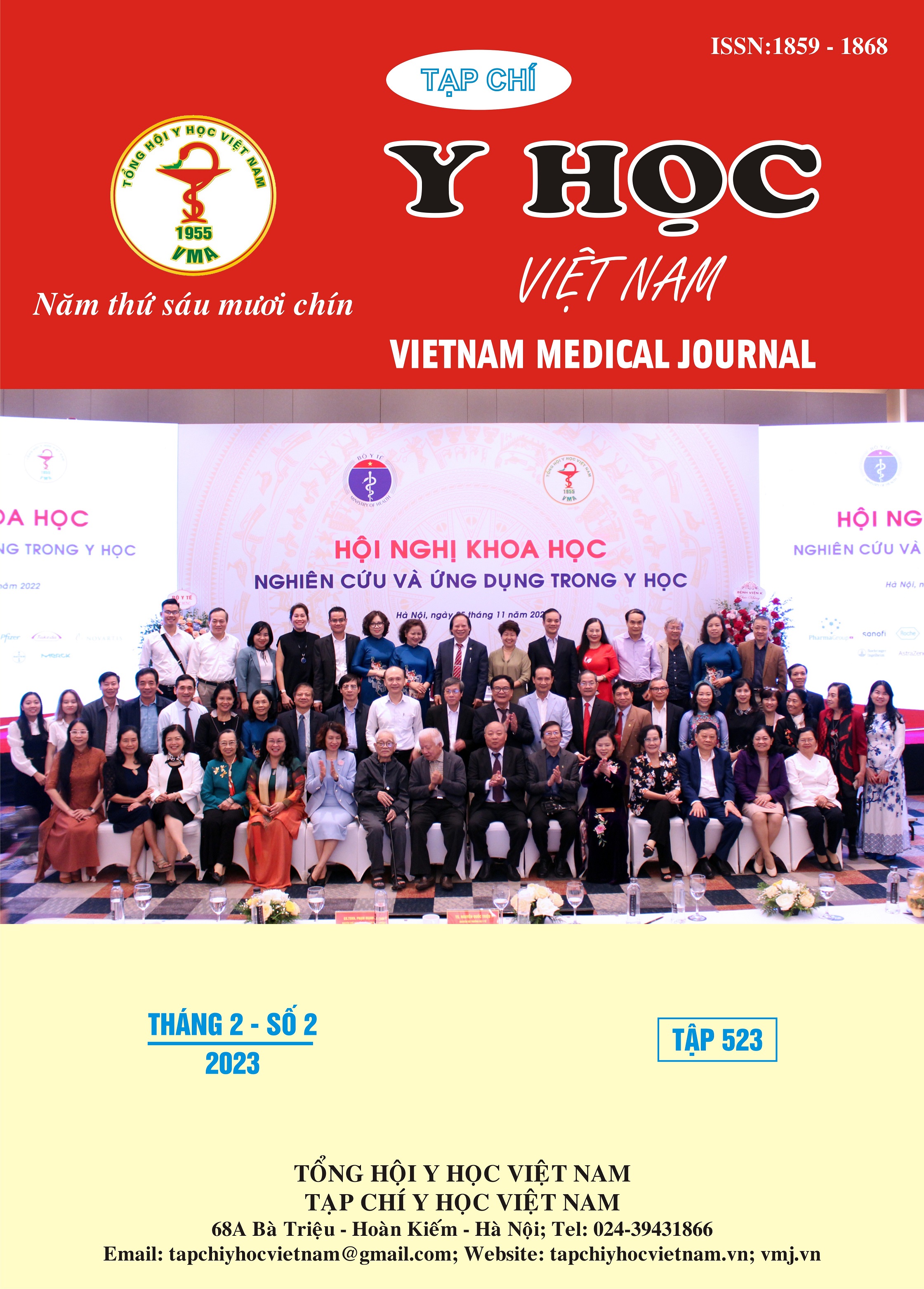A STUDY ON SOME PROGNOSTIC FACTORS FOR DECOMPRESSIVE HEMICRANIECTOMY OF LARGE MIDDLE CEREBRAL ARTERY INFARCTION
Main Article Content
Abstract
Objective: to identify some prognostic factors of outcome for decompressive hemicraniectomy (DH) in large middle cerebral artery infarction. Materials and method: Including 33 patients with malignant middle cerebral artery territory infarction who underwent decompressive hemicraniectomy at the Department of Neurosurgery - 103 Military Hospital from January 2017 to September 2022. Univariate and multivariate analyses were performed for an array of clinical variables in relationship to functional outcome according to the modified Rankin Scale (mRS). Clinical outcome was assessed at 90 days. Results: The mean mRS score at 90 days follow-up post-DH was 4. Good functional outcome was observed in 33.3% of patients at 90 days. The mortality rate at 90 days was 24.2%. Univariate analysis identified a greater likelihood of poor functional outcome (mRS scores of 4–6) in patients with a history of stroke (OR 2.2 [95% CI 1.09–10.66]; p = 0.037), a history of hypertention (OR 12 [95% CI 1.99–72.35]; p = 0.030), peak midline shift (MLS) > 10 mm (OR 12. [ 95% CI 2.16– 66.54]; p = 0.002). Multivariate analysis demonstrated elevated odds of poor functional outcome associated with a history of stroke (OR 5.56 [95% CI 2.23-10.32]; p = 0.026), MLS > 10 mm (OR 6,74[95% CI 1.21-12.33]; p = 0.038), pupillary dilation (OR 11.88[ 95% CI 1.65-30.78] p = 0.017). Patients with infarction involving the dominant hemisphere had higher odds of unfavorable functional outcome at 90 days (OR 9.067 [ 95% CI 1.72–47.67]; p = 0.006). Conclusion: History of stroke, hypertention, diabetes, peak MLS > 10 mm, and presence of pupillary dilation prior to intervention are associated with a worse functional outcome.
Article Details
Keywords
mở sọ giải ép; nhồi máu não diện rộng do tắc động mạch não giữa
References
2. Jüttler, E., et al. (2007), "Decompressive Surgery for the Treatment of Malignant Infarction of the Middle Cerebral Artery (DESTINY): a randomized, controlled trial", Stroke. 38(9), pp. 2518-2525.
3. Leonhardt, G., et al. (2002), "Clinical outcome and neuropsychological deficits after right decompressive hemicraniectomy in MCA infarction", J Neurol. 249(10), pp. 1433-1440.
4. Vahedi, Katayoun, et al. (2007), "Sequential-Design, Multicenter, Randomized, Controlled Trial of Early Decompressive Craniectomy in Malignant Middle Cerebral Artery Infarction (DECIMAL Trial)". 38(9), pp. 2506-2517.
5. Walz, B., et al. (2002), "Prognosis of patients after hemicraniectomy in malignant middle cerebral artery infarction", J Neurol. 249(9), pp. 1183-1190.
6. Zhao, J., et al. (2012), "Decompressive hemicraniectomy in malignant middle cerebral artery infarct: a randomized controlled trial enrolling patients up to 80 years old", Neurocrit Care. 17(2), pp. 161-171.
7. Jüttler, Eric, et al. (2014), "Hemicraniectomy in Older Patients with Extensive Middle-Cerebral-Artery Stroke". 370(12), pp. 1091-1100.
8. Paliwal, P., et al. (2018), "Early Decompressive Hemicraniectomy for Malignant Middle Cerebral Artery Infarction in Asian Patients: A Single-Center Study", World Neurosurg. 111, pp. e722-e728.


